Introduction: Rethinking Rehab Solutions
As society’s understanding of addiction evolves, so too does the approach to rehabilitation. While inpatient drug rehabilitation centers have long been the cornerstone of addiction treatment, these programs may not always suit every individual’s needs. They can be costly, demanding a significant time commitment, and may disrupt daily life. As such, exploring alternative methods is crucial for those seeking recovery from substance use disorders.
Key Facts on Outpatient and Community-Based Alternatives for Substance Use Treatment
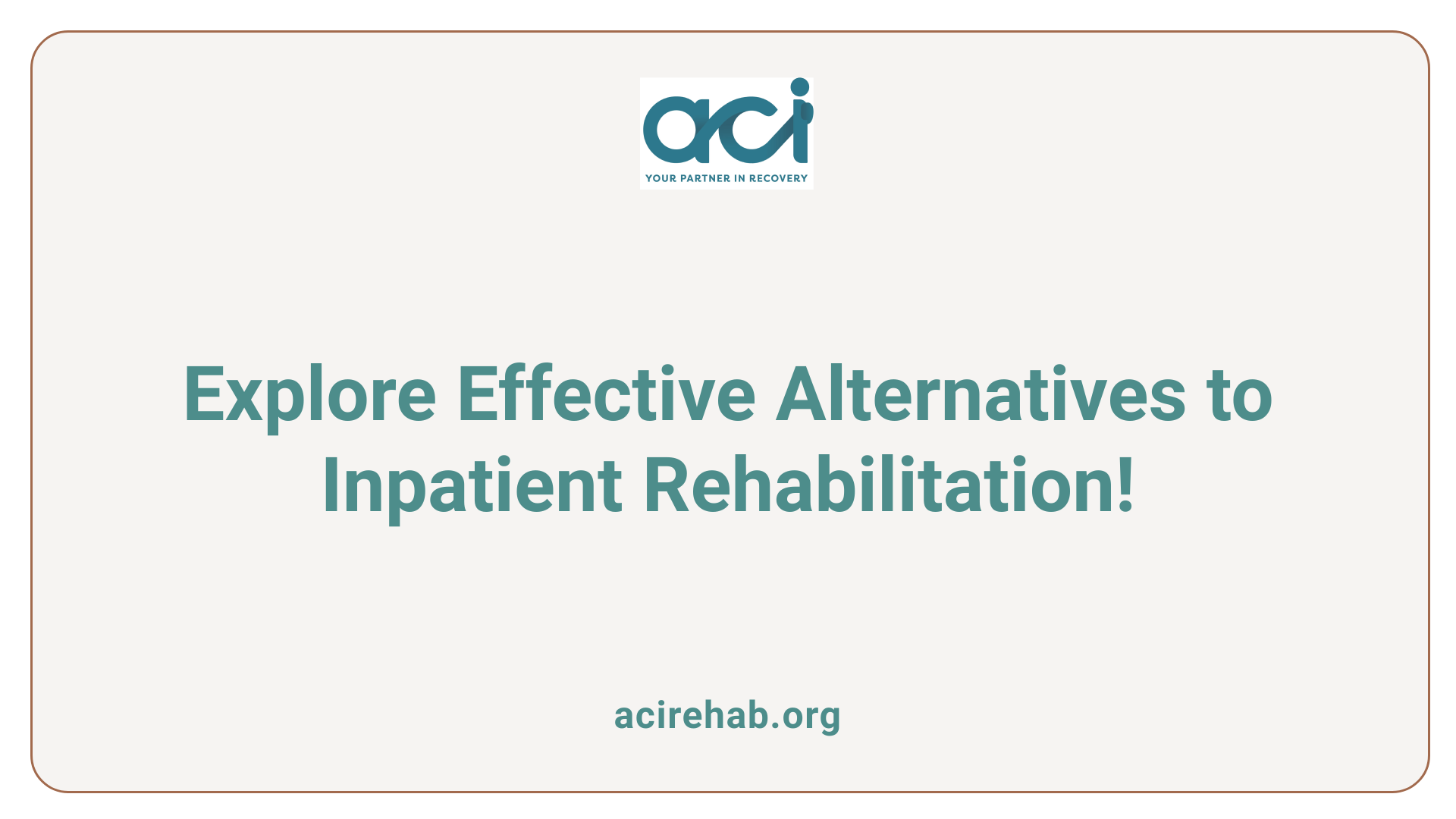
- Outpatient programs allow individuals to maintain daily responsibilities while attending therapy sessions.
- Partial hospitalization programs (PHP) provide intensive daytime therapy with evening home return for greater support.
- Peer support groups like Narcotics Anonymous (NA) offer community support and accountability through shared experiences.
- Holistic therapies such as yoga and art therapy address mental, emotional, and physical well-being during recovery.
- Self-help programs like SMART Recovery empower individuals to create personalized recovery strategies without rigid frameworks.
- High costs of inpatient rehab, ranging from $100 to $2,500 a day, can deter individuals from seeking necessary treatment.
- Inpatient rehab often disrupts daily life, requiring long durations away from family, jobs, and other responsibilities.
- One-size-fits-all approaches in some rehabs can overlook personal histories and needs, particularly for co-occurring disorders.
- Post-rehab relapse rates range from 40% to 60%, emphasizing the need for effective aftercare support.
- Community resources and advocacy can reduce stigma, enhance access, and promote understanding of addiction as a medical issue.
Exploring Outpatient and Community-Based Alternatives
What are the alternatives to inpatient drug rehabilitation for substance use disorders?
Alternatives to inpatient drug rehabilitation for substance use disorders include a variety of outpatient treatment options. Outpatient programs offer flexibility, allowing individuals to uphold their daily responsibilities such as work and family commitments while participating in scheduled therapy sessions. These programs cater to various needs, from routine counseling to intensive outpatient programs (IOP) that include multiple therapy sessions throughout the week.
Partial hospitalization programs (PHP) serve as a middle ground, providing intensive therapy during the day but allowing individuals to return home in the evening. This structure supports those who require intensive treatment without the need for continual supervision found in inpatient settings.
Peer support groups, such as Narcotics Anonymous (NA) and Dual Recovery Anonymous, foster community support and focus on shared experiences, bringing accountability and a sense of belonging to the recovery process. These groups also help combat the feelings of isolation often felt during recovery.
Holistic therapies play a vital role by addressing mental, emotional, and physical well-being. Approaches like yoga, meditation, and art therapy can complement traditional methods and provide additional coping mechanisms for managing addiction.
Self-help strategies and programs like SMART Recovery encourage personal responsibility and the creation of individual recovery plans without needing to adhere to a strict framework like the 12-step model. Furthermore, online support groups have emerged, offering accessible options for those unable to physically attend in-person meetings, ensuring broader reach and support.
It’s essential to tailor treatment approaches to address both substance use and any co-occurring mental health issues, aiming for holistic recovery successes that foster long-term well-being.
Summary Table of Alternatives to Inpatient Treatment
| Treatment Type | Structure | Key Features |
|---|---|---|
| Outpatient Treatment Programs | Flexible schedule | Maintains daily routines; provides individual and group therapy sessions |
| Intensive Outpatient Programs (IOP) | Structured care | Multiple therapy sessions; no overnight stays |
| Partial Hospitalization Programs (PHP) | Daytime therapy | Intensive daytime support; return home after sessions |
| Peer Support Groups (e.g., NA, AA) | Community-based support | Shared experiences; accountability; reduces feelings of isolation |
| Holistic Therapies (Yoga, Meditation) | Mind-body focus | Addresses emotional and physical aspects of recovery |
| Self-Directed Programs (Smart Recovery) | Individualized approach | Empowers individuals to develop personal recovery strategies |
| Online Support Groups | Accessible resources | Offers support for those unable to attend in-person meetings |
By understanding and utilizing these alternatives, individuals struggling with substance use disorders can find effective paths toward recovery that fit their unique situations and support systems.
Understanding the Challenges of Inpatient Rehab
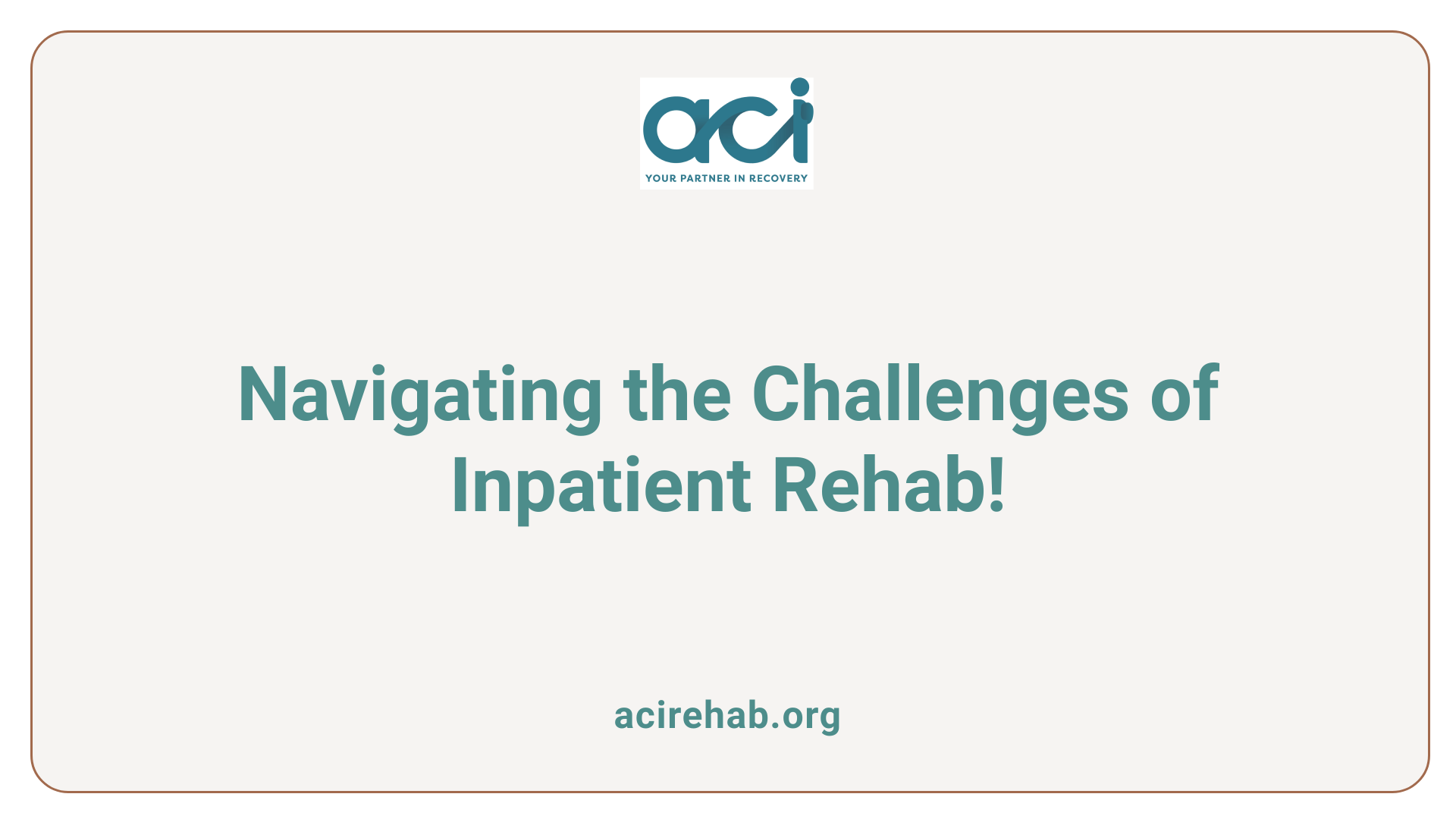
What are the limitations and challenges of inpatient drug rehabilitation programs?
Inpatient drug rehabilitation programs are often perceived as the frontline solution for severe addiction, but they come with a host of challenges that can affect their effectiveness. Cost is a significant barrier, as these programs can range from $100 to $2,500 a day, which may not be fully covered by insurance. This high price tag forces many individuals to forgo necessary treatment or exit programs prematurely due to financial stress.
Beyond financial concerns, inpatient rehab can disrupt daily life. Patients are typically required to commit to long durations away from their families, jobs, and responsibilities, creating a potential feeling of isolation. The structured environment, which some find supportive, can also feel overly restrictive for others.
Many programs utilize a one-size-fits-all approach, which often ignores personal histories, cultural backgrounds, and individual challenges. This can limit the personalization of treatment and fail to adequately address specific needs, particularly for those with co-occurring mental health disorders. Patients might also experience a sense of resentment or frustration due to the stringent schedules and close living quarters, which can hinder their overall motivation for recovery.
Additionally, once patients leave inpatient settings, they frequently face challenges in transferring the skills and coping strategies learned back into their everyday lives. Relapse rates remain high post-treatment, with studies indicating that 40% to 60% of individuals may relapse after rehabilitation. This highlights the need for continued support and effective aftercare.
In conclusion, while inpatient rehab can be essential for certain individuals, it is crucial to evaluate both the benefits and the limitations it presents. Alternative paths and personalized treatment plans may provide the flexibility and specificity that better align with the unique circumstances of each patient.
Comparing Inpatient and Outpatient Treatments
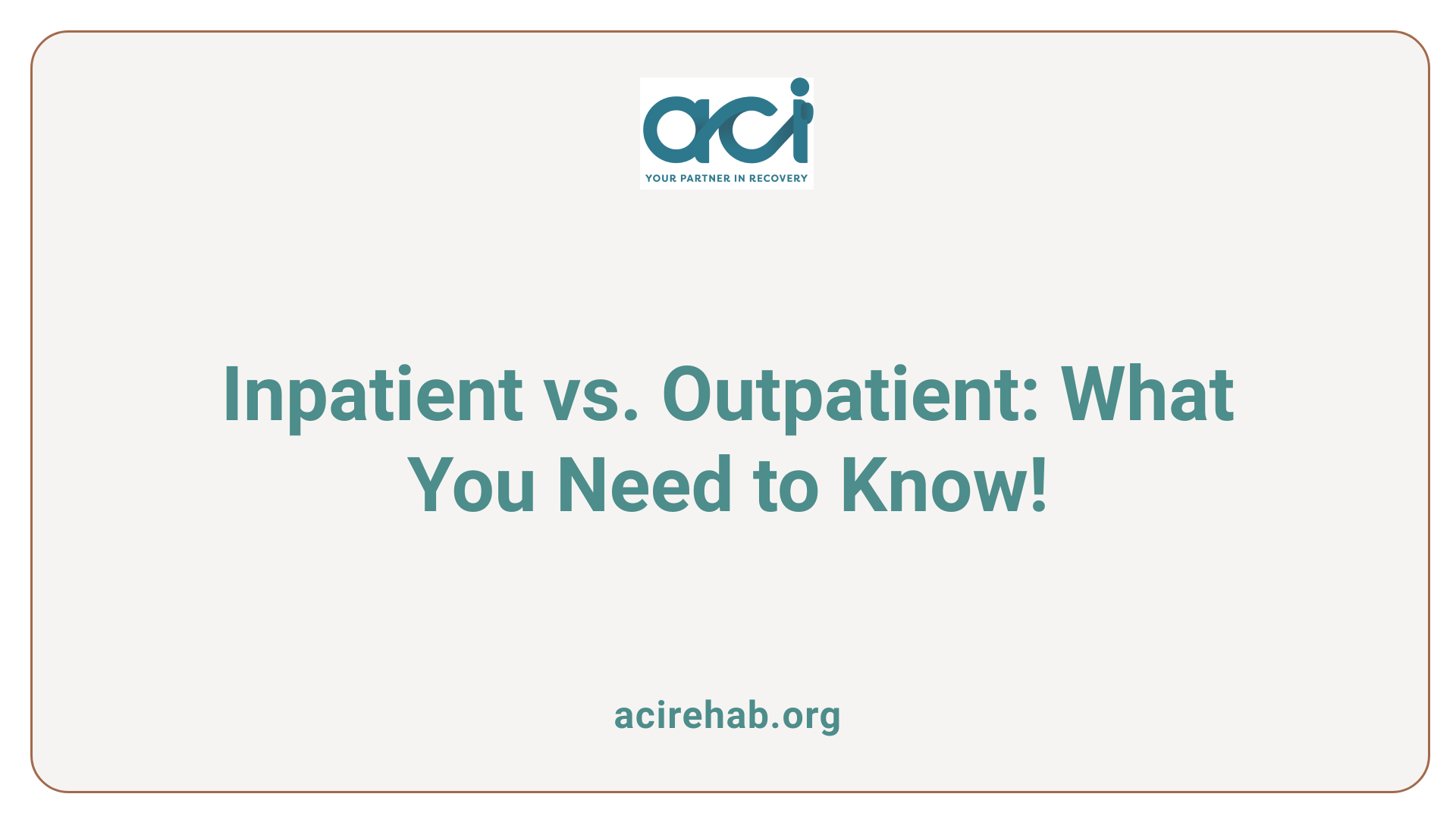
Differences between inpatient and outpatient care
Inpatient treatment requires individuals to stay in a rehabilitation center, providing a 24/7 supportive environment. This immersive approach helps in focusing entirely on recovery, with constant access to medical care, structured therapy sessions, and peer support. The controlled setting is particularly advantageous for those facing serious substance use disorders, allowing for closer monitoring and management of withdrawal symptoms during detoxification.
Conversely, outpatient treatment allows individuals to live at home while receiving care. Patients attend scheduled therapy sessions, which may include counseling and support groups, without the need for overnight stays. This option is ideal for those with existing support structures, such as family and friends, as well as for individuals with less severe addiction issues who are able to manage their daily lives alongside treatment commitments.
Suitability for different addiction severities
Choosing the right treatment setting heavily depends on the severity of the addiction. For instance, individuals experiencing severe substance use disorders or co-occurring mental health issues may benefit more from inpatient treatment due to the comprehensive support it offers. By eliminating external distractions, patients in inpatient rehab can focus solely on their recovery journey.
On the other hand, outpatient options may be more beneficial for those with milder addictions who have strong social support. Studies indicate that outpatient programs can achieve successful outcomes, especially when clients remain engaged in their recovery for a longer duration. Evaluating personal circumstances, including support systems, financial considerations, and the nature of the addiction, is critical in determining whether an inpatient or outpatient approach is the best fit.
Holistic and Community-Based Approaches to Recovery
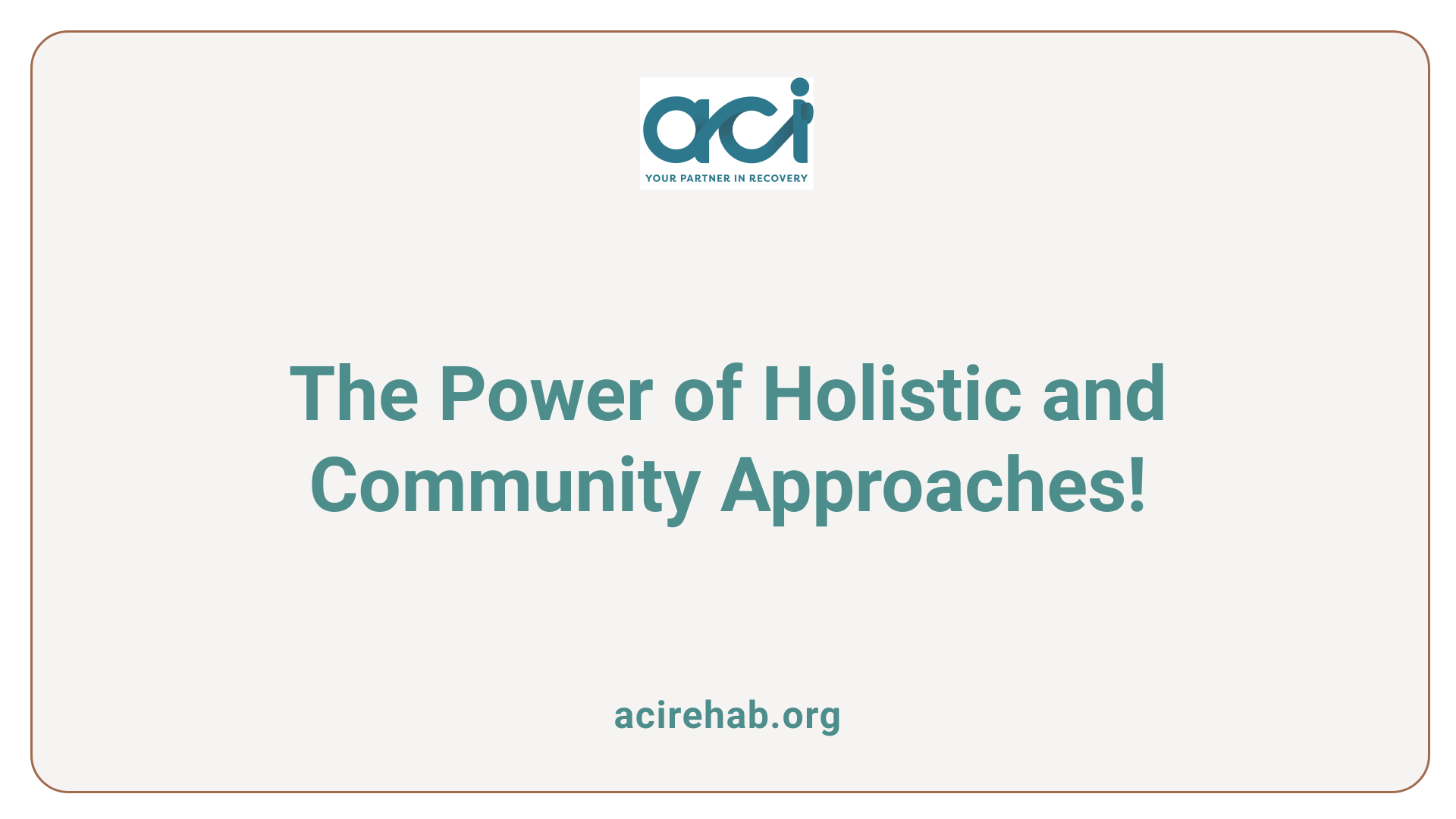
What holistic and community-based recovery approaches are available for addiction recovery?
Holistic and community-based recovery strategies have emerged as vital parts of the treatment landscape for individuals battling addiction. These approaches focus not just on the addiction itself but also on the overall well-being of the person, integrating physical, mental, and emotional health.
Holistic Therapies
Holistic therapies encompass a range of practices designed to treat the individual as a whole. Some popular options include:
- Yoga and Meditation: These practices enhance mindfulness and stress reduction, helping individuals cultivate a healthier relationship with themselves and their surroundings.
- Art and Music Therapy: Engaging in creative outlets can improve emotional expression and promote healing by allowing individuals to explore feelings safely.
- Equine Therapy: The interaction with horses has been shown to foster emotional awareness and connection, making it a unique choice for many in recovery.
These holistic methods effectively complement traditional treatment, addressing underlying psychological issues and enhancing the overall recovery experience.
Community Support Groups
Community support plays a crucial role in addiction recovery. Group settings provide a platform for sharing experiences and fostering a sense of belonging. Notable support groups include:
- Narcotics Anonymous (NA): This peer-led group focuses on shared experiences to support recovery from substance use disorders.
- SMART Recovery: Encouraging self-management, this program empowers individuals to craft personalized recovery plans using evidence-based strategies.
- Dual Recovery Anonymous (DRA): This group addresses both substance use and mental health issues, aiding those with co-occurring disorders.
Additionally, the SAMHSA National Helpline offers 24/7 support, helping connect individuals with local resources and treatment options.
These community-based methods provide essential support, helping individuals develop coping strategies while significantly reducing feelings of isolation. With supportive networks and holistic practices, individuals can foster resilience and commitment to their recovery journey.
Factors Influencing Treatment Decisions
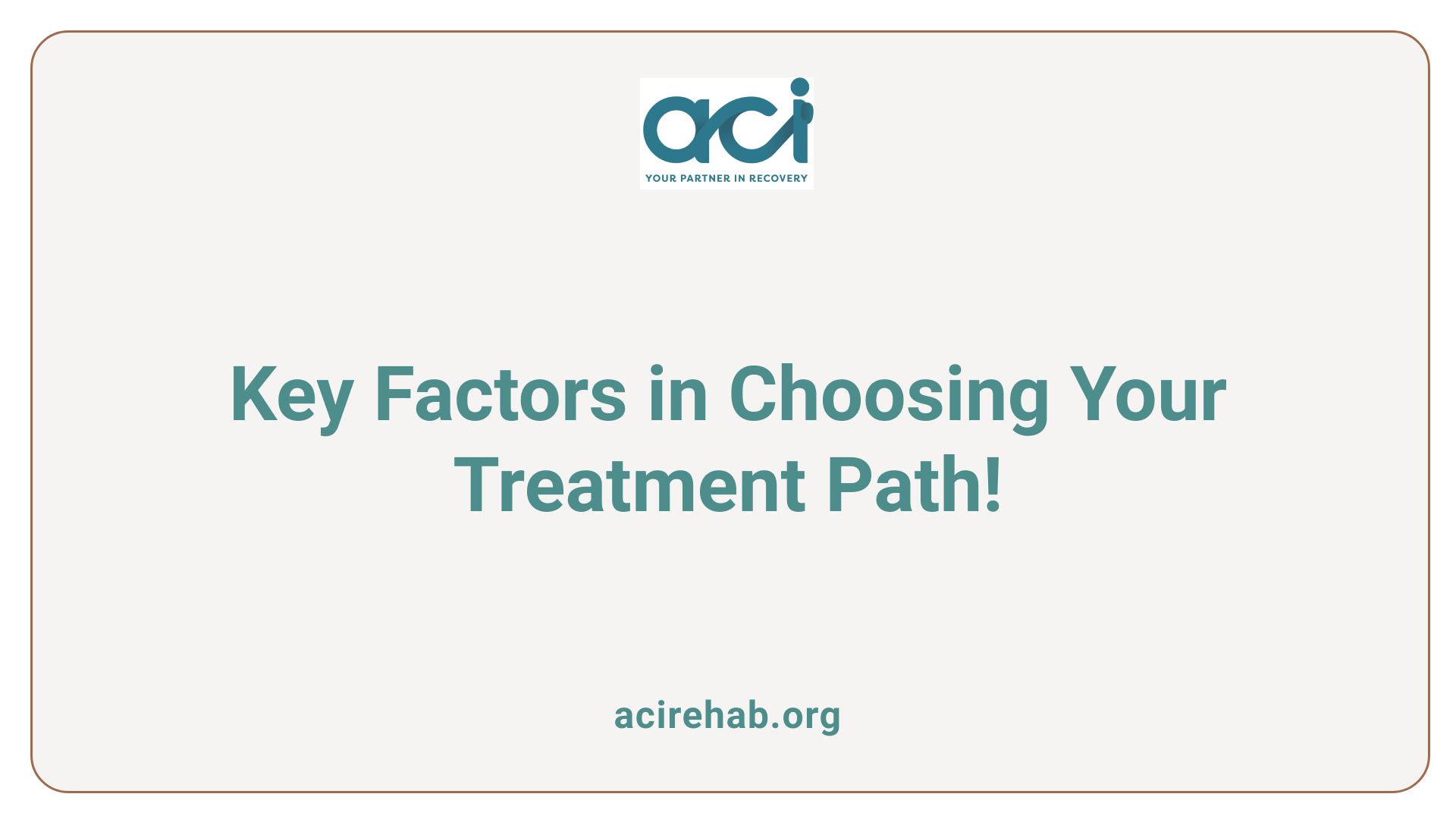
What factors influence treatment choices in addiction recovery?
Choosing the right treatment for addiction recovery is a multifaceted decision influenced by various factors. One of the primary determinants is the severity of the addiction itself. Those with severe substance use disorders may require more intensive care, such as inpatient rehabilitation, while individuals with milder issues often find success with outpatient programs.
Cost is another critical factor, as inpatient treatment can be prohibitively expensive, with daily costs ranging from $100 to $2,500. This places significant financial pressure on individuals, leading many to seek more affordable outpatient or community-based options. Location also plays a role, with many individuals preferring treatment facilities closer to home, which can provide additional support from local family and friends.
Personal commitments, like work or childcare responsibilities, inform whether individuals seek inpatient or outpatient care. Likewise, personal preferences for treatment types significantly affect decisions. Some people thrive in structured environments provided by inpatient care, while others may prefer the flexibility of outpatient programs.
Cultural background and the stigma surrounding addiction can deter individuals from seeking help altogether or influence the type of treatment they feel comfortable pursuing. Finally, prior experiences with treatment, whether they ended positively or negatively, can shape future decisions regarding recovery options.
The role of support systems
Support systems are pivotal in the recovery journey, strongly influencing treatment decisions. A solid support network, including family and friends, can encourage and motivate an individual to pursue treatment, particularly outpatient options that allow them to maintain their daily lives.
Individuals with robust support systems often report greater success in outpatient programs as they bolster accountability and provide emotional sustenance. Community-based resources like support groups (e.g., Alcoholics Anonymous) also enhance feelings of belonging and combat isolation throughout the recovery process.
Moreover, for some individuals, integrated treatment plans that include support from their networks can lead to better outcomes, as they can transition more smoothly from structured programs back to their daily lives. Thus, recognizing the importance of a supportive environment and actively seeking out assistance can be instrumental in making informed decisions about treatment for addiction.
Evaluating Rehab Methodologies
How effective are various rehab methodologies?
The effectiveness of various rehabilitation methodologies varies significantly based on individual circumstances, substance type, and available support systems. Initially, a thorough assessment during intake ensures that the treatment is tailored to each person’s specific needs. This personalized approach is crucial as it acknowledges that a one-size-fits-all strategy does not work in addiction treatment.
The detox process, which can be challenging, is closely monitored by healthcare providers to manage withdrawal symptoms effectively. Inpatient treatment programs provide 24-hour medical and emotional support, which is essential for those with severe substance use disorders. However, outpatient treatments can also be remarkably effective, particularly when patients have a supportive home environment.
Evidence-based therapies such as cognitive-behavioral therapy (CBT) and motivational interviewing (MI) are commonly integrated into treatment programs to equip individuals with coping strategies. Studies show that longer engagement in evidence-based therapies leads to better recovery outcomes. For instance, individuals who remain in treatment for longer than three months typically exhibit higher rates of success.
Additionally, holistic therapies—such as yoga, meditation, and art therapy—can complement traditional treatment, addressing mental, emotional, and physical well-being. These approaches facilitate recovery by targeting underlying psychological issues and promoting overall health.
Post-rehab support and aftercare programs play a crucial role in facilitating a successful transition back to everyday life and sustaining ongoing recovery. Maintaining involvement in community support groups like Alcoholics Anonymous (AA) or Narcotics Anonymous (NA) provides individuals with shared experiences and continuous encouragement, which are vital for long-term sobriety.
| Treatment Methodology | Key Strengths | Considerations |
|---|---|---|
| Inpatient Therapy | 24/7 support, safety, intensive care | Cost, disruption of daily life |
| Outpatient Programs | Flexibility, less disruptive | May lack structure, requires strong support |
| Intensive Outpatient Programs | Structured care without overnight stay | Can be intensive; may not suit all individuals |
| Partial Hospitalization Programs | Intensive therapy during the day | Requires a stable home environment |
| Holistic Therapies | Focus on mind-body connection | May be less familiar in traditional settings |
| Aftercare Programs | Community support, continuous care | Requires commitment and may vary in availability |
In summary, understanding the nuances of different rehabilitation methodologies can guide individuals toward effective treatment that aligns with their unique situations and recovery goals.
Overcoming Barriers to Treatment Access
What barriers exist to accessing addiction treatment, and how can they be overcome?
Barriers to accessing addiction treatment are numerous and multifaceted. One significant challenge is stigma. Many individuals facing addiction feel ashamed or embarrassed to seek help due to societal perceptions, which can prevent them from pursuing recovery options altogether.
Financial concerns also play a crucial role. Many people cite costs as a primary barrier, with around 15% of individuals forgoing treatment due to affordability issues. Inpatient treatment, while offering intensive care, often comes with high price tags that insurance may only partially cover. This poses a significant hurdle for countless individuals whose recovery paths could greatly benefit from structured environments.
Additionally, limited access to care, particularly in rural areas, can make it difficult for those in need to find available treatment options. With most treatment facilities concentrated in urban areas, individuals in less populated regions may struggle with access to much-needed services. To address these barriers, community advocacy and awareness campaigns can lessen stigma and promote understanding of addiction as a medical condition requiring professional assistance.
Strengthening support systems
Creating financial assistance programs can alleviate the burden of treatment costs, making options like inpatient rehab more accessible to those in need. These initiatives could include sliding scale fees based on income, scholarships, or partnerships with local organizations to provide funding for individuals requiring immediate support.
Additionally, expanding insurance coverage to include a broader range of treatment options would allow more people to follow through with necessary care, especially those needing outpatient services or medication-assisted treatments. Strong clinical guidelines and community-based support can effectively connect individuals with tailored treatment plans suited to their needs and resources.
Ultimately, a combination of collaborative efforts aimed at increasing awareness, financial resources, and accessible care will pave the way for individuals to seek effective addiction treatment, aiding their journey towards sustainable recovery.
Creating Personalized Recovery Pathways
Individualized Treatment Plans
Personalized recovery pathways are crucial for effective addiction treatment. Each individual’s journey is unique, and customizing treatment plans ensures that specific needs and circumstances are addressed. A thorough assessment conducted by an addiction specialist can identify a person’s needs based on various factors, including age, gender, co-occurring disorders, and support systems.
An effective plan often combines different modalities, such as therapy sessions, medication-assisted treatment, and community resources like support groups. Utilizing this multi-faceted approach allows individuals to feel resilient and engaged in their recovery process.
Role of Consultation and Support
To seek personalized recovery pathways tailored to individual needs, consulting with a specialist is essential. These professionals assess specific circumstances and preferences, which may involve creating a comprehensive recovery plan. This plan might integrate various treatment modalities, including therapy and community support.
Fostering a supportive environment greatly aids recovery. Listening without judgment, respecting personal boundaries, and encouraging healthy habits can build a strong sanctuary for healing. Celebrating milestones fosters motivation, reinforcing the commitment to change.
If needed, seeking professional help for additional resources can enhance the transition, ensuring ongoing support. Moreover, peer support groups provide essential communal aspects that contribute to long-lasting recovery, significantly increasing the chances of a successful outcome.
By prioritizing personalized treatment and bolstering supportive networks, individuals are better equipped to navigate their recovery journeys, ultimately leading to improved overall well-being and lower relapse rates.
Pros and Cons of Rehabilitation Approaches
What are the pros and cons of different rehabilitation approaches?
Different rehabilitation approaches each have their unique benefits and drawbacks, making it essential for individuals to assess their needs and circumstances before choosing a path.
Inpatient Rehabilitation
- Pros:
- Structured Environment: Provides 24/7 supervision and support, ideal for serious substance use disorders.
- Focused Treatment: Patients are free from daily distractions and triggers, allowing for concentrated recovery efforts.
- Comprehensive Care: Involves medically-assisted detox and various treatment methodologies, including individual and group therapies.
- Cons:
- High Costs: Daily costs can range substantially, often making it financially challenging for many individuals.
- Disruption of Daily Life: Requires individuals to temporarily leave their responsibilities at work or home, which can be stressful.
- Potential Isolation: The intense structure can lead to feelings of loneliness for some as they adapt to close living conditions.
Outpatient Rehabilitation
- Pros:
- Flexibility: Allows individuals to maintain daily routines, including work and family obligations, promoting an easier transition back to normal life.
- Cost-Effective: Generally lower in cost compared to inpatient options, making treatment more accessible to those in need.
- Community Connection: Encourages social integration and support from family and friends during the recovery process.
- Cons:
- Lack of Intensity: May not offer the level of supervision necessary for individuals with severe addictions or withdrawal symptoms.
- Potentially Less Effective for Some: Research suggests it may yield lower completion rates, particularly for those needing more structured support.
Impact of Setting on Recovery
Recovery outcomes can vary based on the treatment setting and individual needs.
-
Community-Based Rehabilitation:
- Provides essential support networks, like groups such as Alcoholics Anonymous (AA).
- Effectiveness can depend significantly on local community resources.
-
Holistic Approaches:
- Programs incorporating therapies such as yoga and meditation can enhance overall well-being.
- May not always offer medically supported treatments to ensure comprehensive recovery.
In summary, while inpatient rehabilitation may suit some individuals, others may find outpatient or community-based options better align with their personal situations, showcasing the importance of a personalized approach to treatment.
Guidance for Making Informed Treatment Decisions
How can one make informed decisions regarding addiction treatment options?
Making informed decisions regarding addiction treatment options involves understanding the variety of available resources and the individualized approach necessary for effective recovery. The initial step is to assess personal situations, including the severity of the substance use disorder, financial capability, and support systems in place.
It’s essential to consult with healthcare professionals who can offer insights tailored to individual circumstances. These professionals guide patients and their families through the decision-making process, providing clarity on the pros and cons of inpatient vs. outpatient options, holistic therapies, and community support groups. Listening to the individual seeking help is vital, as recovery is a personal journey that requires tailoring to their unique needs and pacing.
Engagement in the treatment process fosters a collaborative environment. This includes involving family members or support networks, allowing for collective decision-making and strengthening support structures. Celebrating small milestones and achievements during the recovery journey can also motivate individuals, reinforcing a commitment to long-term sobriety.
To reach the best outcomes, individuals are encouraged to explore various options, such as:
- Outpatient Programs: Offering flexibility to maintain daily routines while receiving treatment.
- Intensive Outpatient Programs (IOP): Structured support without the need for overnight stays.
- Partial Hospitalization Programs (PHP): Intensive therapy during the day with the benefit of a stable recovery environment afterwards.
- Holistic Approaches: Integrating mind-body practices like yoga and meditation to enhance overall well-being.
By combining personal insights with professional guidance, those grappling with addiction can make well-informed choices that ultimately lead to effective recovery solutions.
Conclusion: Embracing Diverse Treatment Options
The path to recovery from substance use disorders is inherently personal and requires a thoughtful balance of various treatment options. While inpatient drug rehabilitation centers offer valuable resources, they are not always the most appropriate solutions for everyone. By understanding the landscape of alternative options, acknowledging the limitations of traditional settings, and considering unique personal circumstances, individuals can make informed choices that best support their journey toward lasting recovery. Promoting flexibility and personal empowerment in addiction treatment ensures that more people can access the help they need and sustain their progress in meaningful, impactful ways.
References
- Why Inpatient Drug Rehabilitation Center Isn’t Always the Answer?
- An Inpatient Drug Rehabilitation Center Isn’t Always the Answer
- An Inpatient Drug Rehabilitation Center Isn’t Always the Answer at …
- An Inpatient Drug Rehabilitation Center Isn’t Always the Answer
- An Inpatient Drug Rehab Center Isn’t Always the Answer
- Inpatient Drug Rehab Isn’t Always the Ideal Choice
- Why Inpatient Drug Rehab Center Isn’t Always Necessary?

